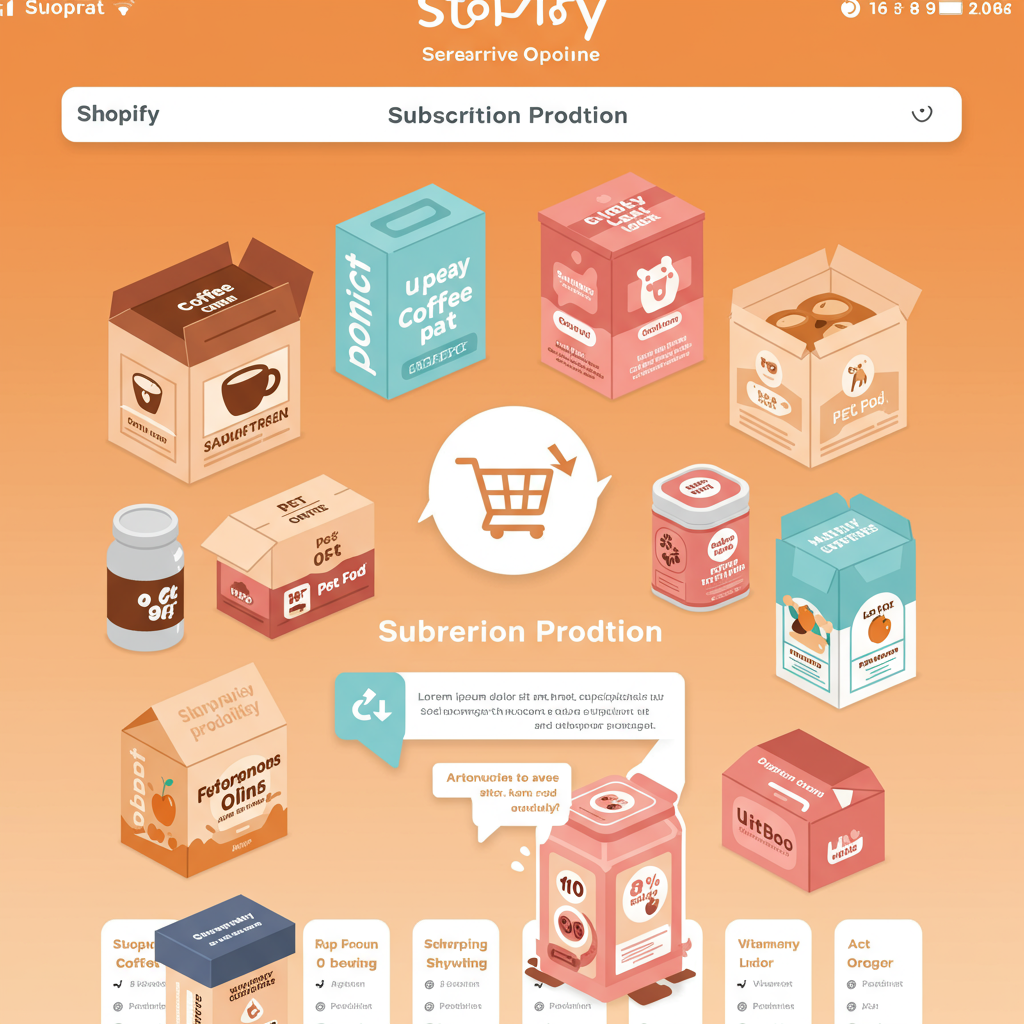Unlock Recurring Revenue and Customer Loyalty with Your Shopify Store
Hello fellow entrepreneurs! Today, I want to share some insights into a powerful business model that’s transforming e-commerce: subscription services.
If you’re running a Shopify store, you’re perfectly positioned to tap into this recurring revenue stream. I’ve seen firsthand how subscriptions can stabilize income and foster incredible customer loyalty.
The subscription economy is booming. Consumers are increasingly valuing convenience and curated experiences, making recurring purchases a natural fit for many products.
Think about it: coffee, pet food, beauty products, even digital content – almost anything consumable or regularly needed can be turned into a subscription.
For us merchants, the benefits are clear. We gain predictable monthly recurring revenue (MRR), which makes forecasting and planning so much easier.
Beyond financial stability, subscriptions build stronger customer relationships. Subscribers are often your most loyal customers, leading to higher lifetime value (LTV).
They also provide valuable data on purchasing habits, allowing us to refine our product offerings and marketing strategies over time.
Now, you might be wondering, “Can Shopify handle subscriptions natively?” The short answer is, not entirely out of the box.
Shopify is an incredible platform for one-time purchases, but its core functionality doesn’t include the complex recurring billing and customer management features required for subscriptions.
This is where the vast ecosystem of Shopify apps comes into play. Third-party subscription apps are essential tools that integrate seamlessly with your store.
Choosing the right app is crucial. I recommend looking for features like robust recurring billing, a user-friendly customer portal, and effective dunning management.
Dunning management, for instance, automatically handles failed payments, which is vital for retaining subscribers and minimizing involuntary churn.
Popular options include ReCharge Subscriptions, Bold Subscriptions, Appstle Subscriptions, and Seal Subscriptions. Each has its strengths, so research is key to finding the best fit for your specific needs.
Once you’ve selected an app, setting up your subscription products is the next step. You’ll typically create a product in Shopify, then configure its subscription options within the app.
This involves defining subscription intervals (weekly, monthly, quarterly), setting up different pricing tiers, and deciding if it’s a standalone subscription or an add-on.
A critical component is the customer portal. This is where your subscribers can manage their own subscriptions – pausing, skipping orders, updating payment methods, or canceling.
A well-designed customer portal reduces customer service inquiries and empowers your customers, leading to higher satisfaction and retention.
Communication is also paramount. Automated email notifications for upcoming charges, failed payments, or order confirmations keep customers informed and reduce surprises.
From an operational standpoint, managing inventory for subscriptions requires careful planning. You need to ensure consistent stock levels for recurring orders.
Fulfillment processes might also need slight adjustments to accommodate regular, scheduled shipments. Many apps integrate with fulfillment services to streamline this.
Customer service for subscribers can differ. You’ll often deal with inquiries about order modifications, billing cycles, or specific product variations.
Marketing your subscription service is another exciting area. Highlight the convenience, cost savings, or exclusive benefits of subscribing over one-time purchases.
Consider offering incentives like a discount for the first few months, exclusive subscriber-only products, or free shipping to encourage sign-ups.
Finally, don’t forget about analytics. Your chosen subscription app should provide detailed insights into key metrics like Monthly Recurring Revenue (MRR), churn rate, and Customer Lifetime Value (CLTV).
These metrics are invaluable for understanding the health of your subscription business and identifying areas for improvement. Regularly review them to optimize your strategy.
What do you think about this article? I’m always eager to hear your thoughts and experiences with subscription models on Shopify.
In conclusion, integrating subscription services into your Shopify store is a strategic move that can unlock significant growth and stability.
While it requires leveraging third-party apps, the investment in time and resources is often well worth the recurring revenue and enhanced customer loyalty it brings.
I encourage you to explore this exciting avenue for your e-commerce business. The future of retail is increasingly subscription-based, and Shopify provides the perfect foundation to build upon.






